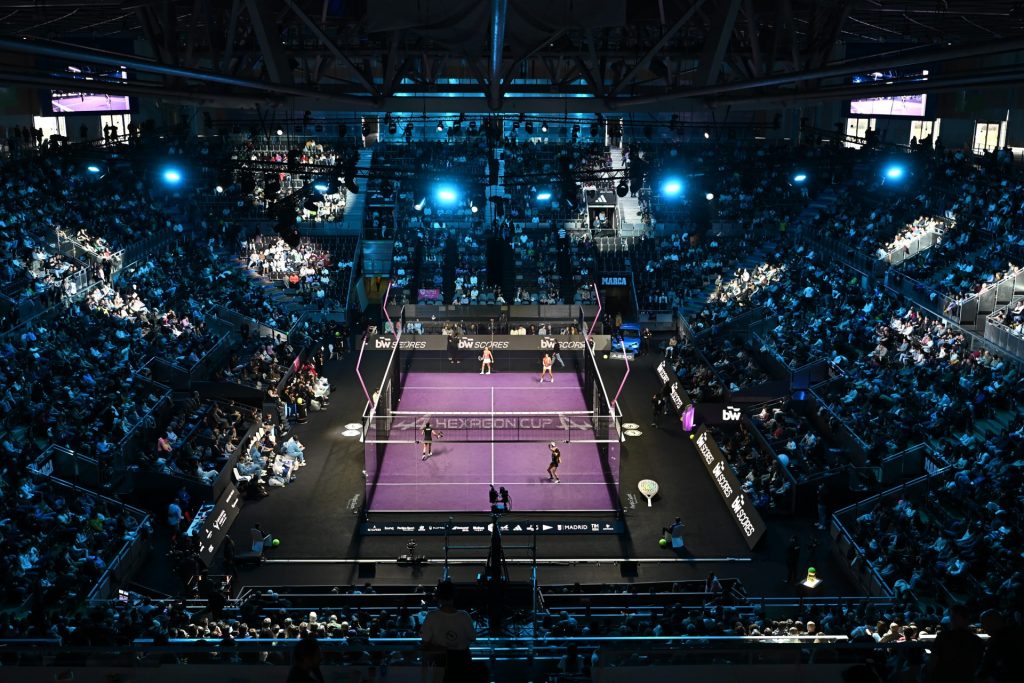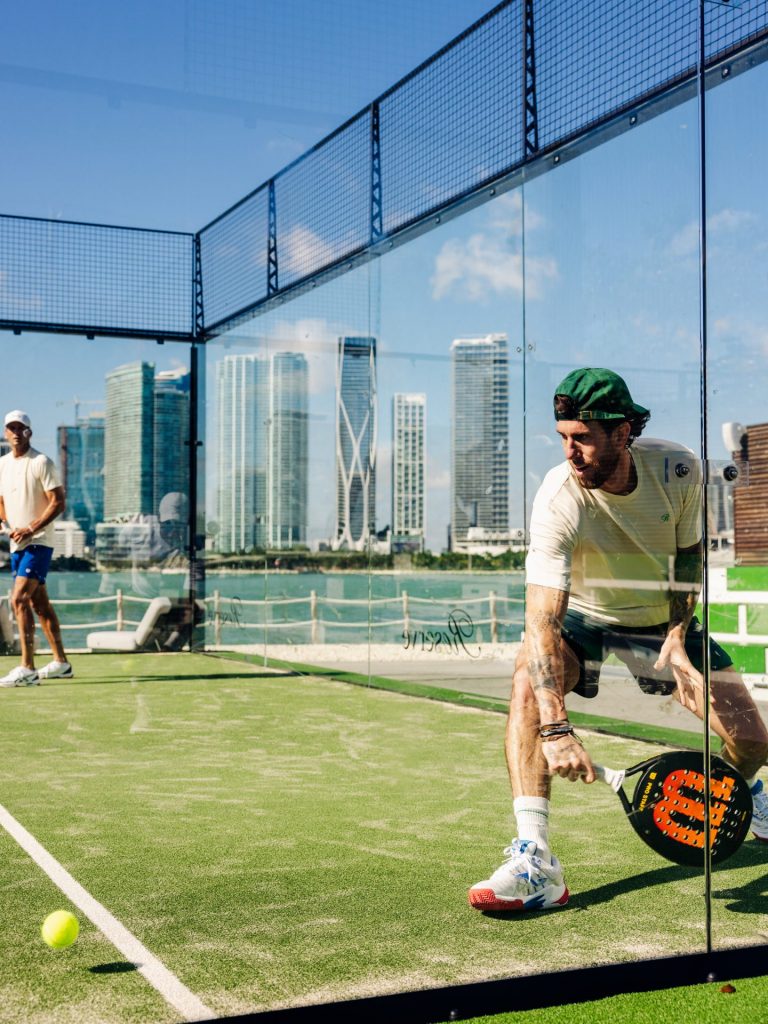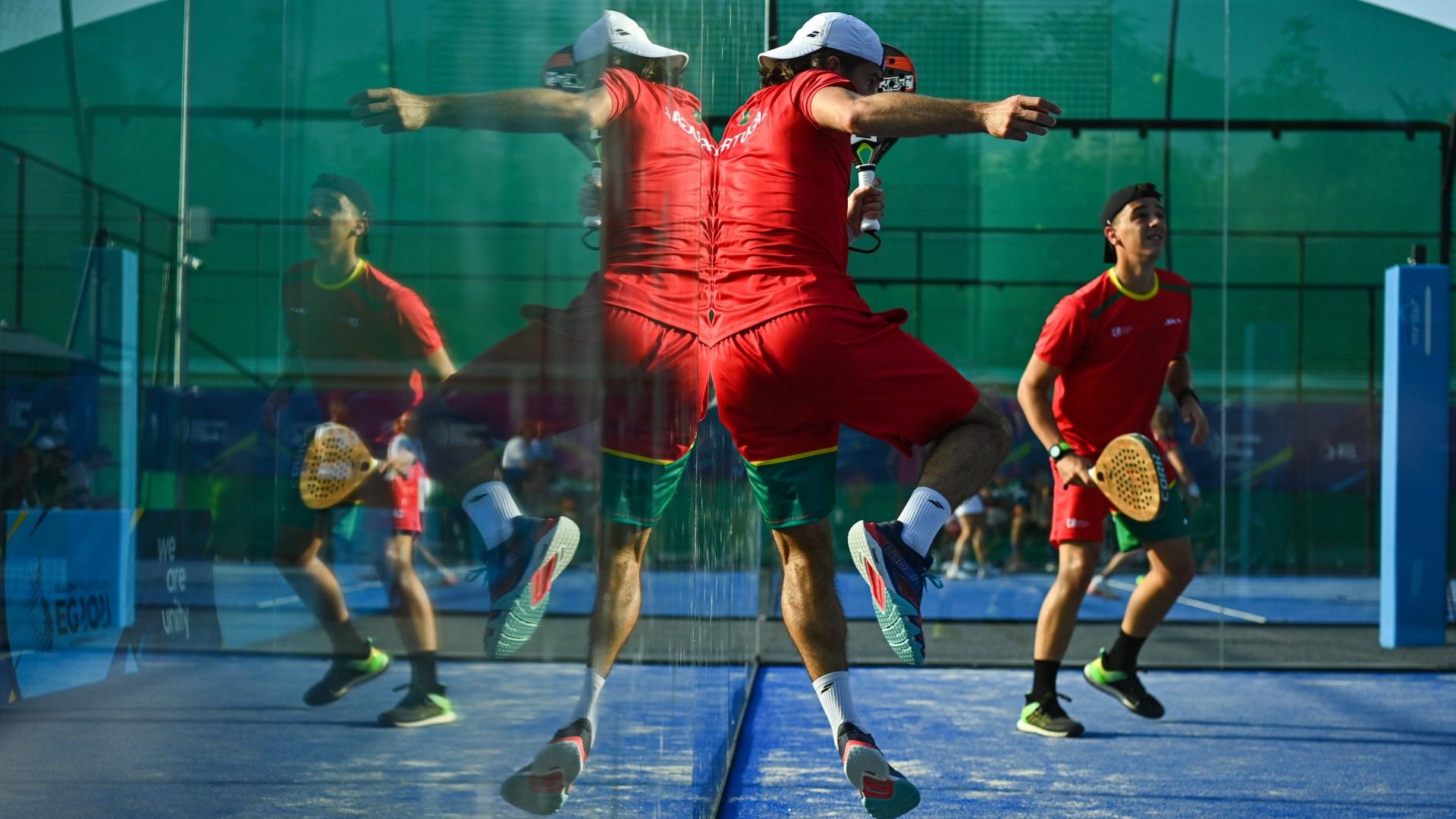Corcuera calls the fledgling sport “paddle Corcuera”, and a buzz begins to grow. A few years later, an aristocratic friend from Spain, Prince Alfonso de Hohenlohe, rocks up, plays the game with him, and duly builds two padel courts in his hotel in Marbella.



Soon, the game is getting attention across the country and then the Spanish-speaking world. And then as the years roll on, its ambitions grow even wider, to the point where padel looks like becoming a new, global craze with tens of millions of participants and professional players earning big money.
But is there space in a saturated sporting world for this upstart? The parent sport, tennis, has over 100 million participants worldwide and its Grand Slam events and ATP tour vie for the public’s attention alongside other “tier one” events in football, sports with centuries of tradition and established fan bases. “The market is crowded and attention spans are shorter than ever,” concedes a spokesperson for Premier Padel, the main pro padel tour.
Madrid. 2025. Stand outside the city’s fashionable Rosewood Hotel and doubts you might have about padel’s viability start to drift away. Black 4x4s and people carriers disgorge their occupants into the launch party of Krü, a padel team owned by football legends Lionel Messi and Sergio Agüero. It competes in the Hexagon Cup, which describes itself as a “ground-breaking team franchise padel competition and entertainment event”.
The men, decked out in tailored jackets, jeans and box-fresh trainers, look like Julio Iglesias or his son, Enrique. The women seem to have walked off a movie set. There’s a society scene here, the kind Tom Wolfe might have written about: players and famous sports personalities drinking a caña, perched over tapas. The global padelocracy are out in force.
Right in the middle of it all is Enrique Buenaventura, one minute shaking Agüero’s hand, the next being photographed next to Eva Longoria, the star of Desperate Housewives. In his mid-40s, the serial sporting entrepreneur is a former Real Madrid schoolboy prospect and founder of the Hexagon Cup, one of a series of new tours and tournaments that aim to take padel from mass participation pastime to global spectator sport.
“It’s amazing,” Buenaventura tells me the next day, between matches at the arena. “I’ve seen the growth of padel in Spain for the last 30 years, and I’ve lived in London for the last 12. Since I came to London, I’ve played tennis at a club, and I kept saying to the owners, ‘you need to put in two or three padel courts. You will see, people will love it here in the UK. People will go crazy’.”
Crazy is just what people in the UK have gone. The country now boasts more than 400,000 active padel players – a 326% year-on-year increase, according to Playtomic, the sport’s leading court booking platform. In January alone, 17,000 new players signed up through the app.
On a global scale, Deloitte says the value of the sport’s ecosystem will hit £3.3bn next year. In the last five years, it has gone from being played in 50 countries to 140. There are more than 30 million players; up from “only” eight million in 2018. “It’s happening all over the world,” Buenaventura explains. “The same thing that happened in Spain 30 years ago.”
The obvious question is: why now? Well, David Beckham, Stormzy, and Cristiano Ronaldo all play, which helps. Andy Murray, Anthony Joshua and Rafa Nadal are involved too. Mr Beast, the world’s biggest YouTuber with 385 million subscribers, is another devotee, and A-list influencers have helped Premier Padel, the sport’s official tour, rack up 2 billion views across social media.
Yet excited participants and celebrity influencers do not necessarily add up to the spectators that Buenaventura needs to make his franchises a success. “Padel as an amateur game is so addictive,” he says. “Everyone that plays it loves it… The big question mark is how to make those fans also become followers of the proper tour as a media product. And I think that is going to take time.”
At the moment, Buenaventura admits, the top pro players are Spanish and Argentinian, restricting padel’s international appeal. “You need the competition between nations now, between a Spanish player against a British player, against a French player. And it’s going to be a few years for that to happen.”
Still, big brands are prepared to take a risk. Renault’s Alpine sports cars, Adidas and Slazenger are backing the Hexagon Cup to the tune of around €2m. Elsewhere, the sport has pulled in the likes of Toyota, Kia, Hublot, Dunhill and perhaps most notably, Red Bull, with the latter partnering with Premier Padel until 2027 in a deal worth tens of millions of dollars. “Major global brands are recognising the incredible commercial and sporting potential,” says Premier Padel’s Rob Mitchell.
Supporting padel means exposure on DAZN, which broadcasts the Hexagon Cup for free. ESPN is a broadcast partner and ITV has already made it the first padel event to be shown on UK terrestrial TV.
Rewards for pro players have boomed too, with million-euro equipment contracts up for grabs and significant increases in prize money. Hexagon offers €1.2m in prize money and Premier Padel’s prize fund is in excess of half a million euros for major events.
For the amateur, the lure is obvious. “You can play with your kids. You can play with your wife. Any level of fitness, they can start playing immediately,” says Buenaventura.
That’s not to say the game is easy. In tennis, the geometry of the game is two-dimensional, angles drawn in mono-directional lines. In padel, the game is played in three dimensions, requiring not only a full understanding of what happens to a sphere travelling across a flat plane, but also what happens to a ball when walls are added around the court.
Players must understand how balls rebound off verticals, the impact of spin and how to deal with the fact that part of the wall is made of cages, a relic of the chicken wire used in the game’s Mexican origin. That gives padel an exciting degree of unpredictability, and so does the echo of Cucuera’s back garden in the court design. If the ball is smashed out of court but the player has the vision to anticipate where it’s going, they can leave the court and continue the rally through the entrance. This has to be seen to be believed.
It’s also a very social game. Padel is designed as a doubles sport where you’re forced into that most un-English of vocations, actually talking to each other when playing. As well as businesses hosting team bonding and networking events, clubs even say their padel courts are being booked up by singles looking to meet partners.
The hope is that padel might evolve into a mainstream social sport: a less elitist, less gender-specific and less taxing version of golf. It’s a big dream – golf has been played in Britain for over 600 years. Can games with such deep cultural roots be edged out so quickly?
Padel has some advantages in terms of its accessibility. Equipment is reasonably priced, with plenty of racket options available from £30 upwards. Courts are smaller than tennis, requiring only 2,200 square feet versus 7,200, making the game more accessible for players of all demographics but also more profitable for clubs.
But there are issues. While we fast approach 1,000 courts in the UK and demand shows no sign of letting up, courts in London can cost up to £80 an hour.
“I don’t really see that as being sustainable,” says UK Padel’s Mark Ayers. “If I’m honest, OK, I think there will be a kind of a reckoning moment.” Ayers is trying to promote the game’s inclusivity with school and youth events at his clubs. Padelstars, another club operator, offers free equipment for schools and Age UK sessions among other initiatives.
The court shortages will be eased somewhat by a plethora of new courts at Powerleague’s five-a-side centres, at David Lloyd clubs and at new venues in Scotland, backed by Murray. Yet noise is proving an obstacle to the sport’s expansion – last year, plans to build several padel courts in Bath were turned down after residents of Landsown complained that the game’s solid bats and enclosed courts made the game in progress sound “like gunfire”. Similar acoustic objections have tripped up developers across the country, especially in London.
Perhaps these hindrances are useful. In Sweden, the game boomed too quickly, and a boom of enthusiasm and investment soon turned to bust. Padel centres across the country are being converted back into supermarkets and warehouses. Participation levels however still remain at over 700,000 players and Sweden remains a top five padel market.
There is also the question of attention. Padel might be winning eyeballs and clicks, but it exists alongside other upstart offerings, such as a US-based volleyball league, the new LIV golf tour and in America, a similar tennis derivative, pickleball, which has attracted backing from American sports legends Tom Brady and Lebron James and has around 20 million players. Of course, there are also the huge dominating mainstream sports, particularly football and US football.
It doesn’t help, then, that professional padel appears confusing to the uninitiated, with the franchise-based Hexagon Cup competing alongside A1 Padel, the FIP Tour and the Premier Padel Tour, which is backed by the deep pockets of Qatar Sports Investments, owners of Paris Saint-Germain.
And of course, there are lessons from racket sport history. Not even the marketing genius that is Barry Hearn has been able to secure for his World Championships of Ping Pong the same kind of success as his ventures in snooker and darts. Squash – also easy to play and hard to master while being surprisingly fun to watch – had its moment in the 1980s and 90s but is less popular now, and has not broken through as a mainstream spectator sport.
The padelocracy know all this, and they are unmoved. They see a compelling and innovative offering attracting big names and big sponsors and dream of the breakthrough ahead.
A true tier one sport, says Buenaventura, is one where people will “stop doing something to watch. People would not go for dinner (in order to) watch the Champions League final. People won’t go for lunch because they want to see the Monaco Grand Prix. I think, obviously we are not there with padel. It will take some time. But we’ll get there.”
Adam Black is the founder of livePadel and coaches padel at Social Sports Society. The inaugural padel Intercontinental Cup takes place in London in July
